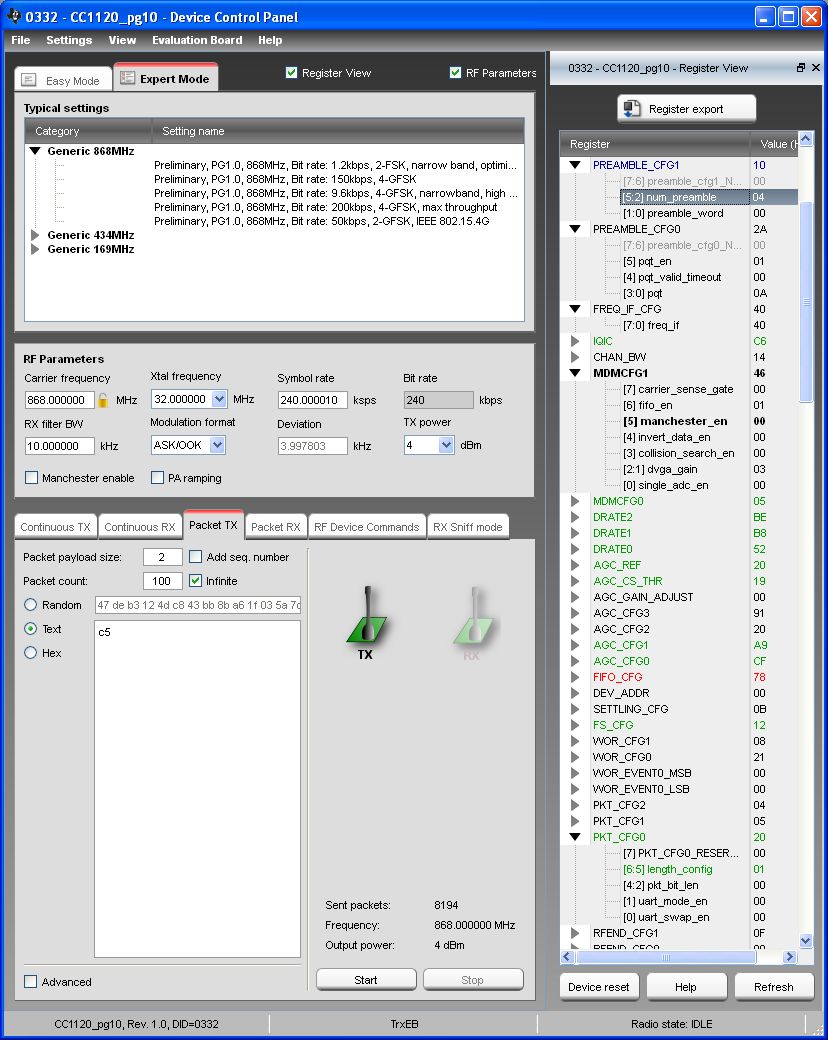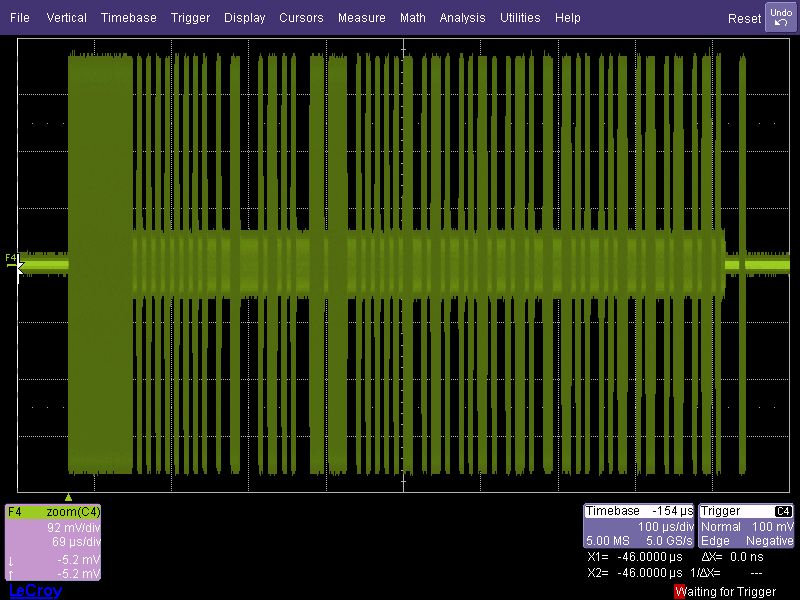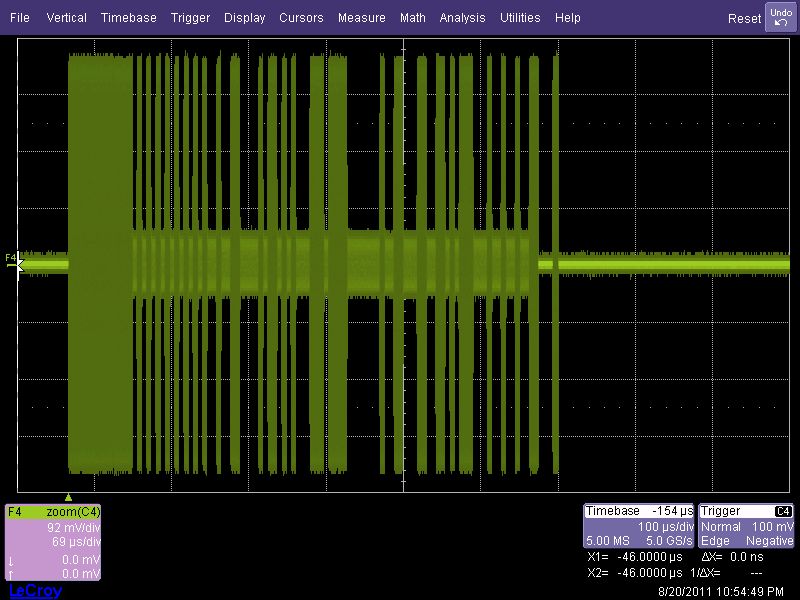Hi,
I am in the process of adapting the CC112x series to an existing radio solution based on the CC1020. I have run into some problems regarding the sync word detection. Is it correct to assume that manchester encoding does not apply to preamble and sync word? SmartRF Studio states that "Manchester coding is only applicable to payload data" although there is no information on this in the manual. This is in stark contrast to for instance the CC1101 which uses the same encoding for all bits. (as pointed out here: http://e2e.ti.com/support/low_power_rf/f/155/t/126101.aspx).
Could you please confirm this? It certainly seems so since expanding the current manchester encoded sync word to NRZ helps.
Regards,
Per




